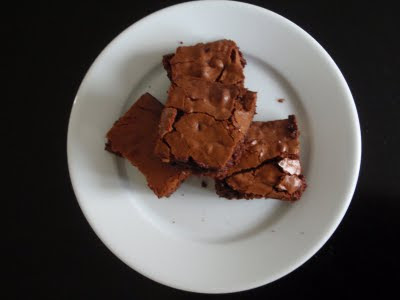
Most every week for the last 3 years, Jared and I have celebrated the end of the week with a tradition we call Pizza Friday. This started when we were looking for a way to unwind after a long workweek when we would make big pizzas on baking sheets and watch movies while we ate. However, the tradition has changed over time and thanks to some friends moving conveniently close Pizza Friday is currently a little party that closes the week, often with a movie or a game to add to the fun. Thanks to my parents' gift of a pizza stone and peel, I can make four small pizzas to please our assorted palates in rapid succession. The one constant in this ritual, other than
the sauce, is this dough recipe.
Once I found it, I have not used any others. I consider it occasionally, but this dough is so simple to make and just works so amazingly well that I always come back to it. You can make it the night before, allowing it to rise in the fridge before letting it come to room temperature and stretching it into rounds. If you really need to plan ahead, you can freeze it after dividing it up where it keeps for weeks and you can just thaw it out overnight and have pizza the next day.

Jared loves strombolis, and let me tell you this dough makes a great stromboli. Roll each portion out, fill with your favorite things (I like cheese, sausage, sun-dried tomatoes, and browned onions) then brush the edge with egg wash, fold the dough over in half, and roll the edges under. Bake at 500 degrees for 15-25 minutes (check often, it depends on your fillings) or until golden brown and enjoy warm.
I share all of this with you because I hope that even if you've never made yeasted dough you'll give this one a try and experiment yourself. If you make this dough part of your repertoire I promise you'll find it simple to make, a myriad of uses for it, and you may even start each weekend with a casual get together of your own.

Pizza Dough
Adapted from
Smitten Kitchen
Makes 4 small pizzas or strombolis
12 tablespoons warm water, although you may need a tablespoon more depending on the weather...
4 tablespoons white wine
1 1/2 teaspoons active dry yeast
1 teaspoon honey
2 teaspoons kosher salt
2 tablespoons olive oil, plus more for the bowl
3 cups flour, plus more for the work surface
Cornmeal
1. Whisk the wine, water and yeast in a large bowl until the yeast dissolves. Add honey, salt and olive oil (to keep the honey from sticking to the spoon, I put a little olive oil in it) and stir until combined. Add the flour and stir it until combined. It will look like a shaggy mess; start off with a spoon, then work it with your fingers until the dough comes together. If it's really dry and isn't cohesive, you can add some more water a tablespoon at a time, but this is generally not necessary. On a lightly floured surface, knead the dough for a few minutes until it looks smoother.
2. Wash out your large bowl and lightly oil it. Put the dough in the bowl, lightly coat it with oil and cover with plastic wrap. Allow the dough to rise for about 2 hours, or until doubled. To test it, press two clean fingers into the dough. If it springs back, the dough needs to rise longer. If the deep impression is left, your dough is ready.
3. Preheat your oven to its highest temperature, which is 500 on my oven. If you have a pizza stone, place it in the oven to preheat. If you do not have a pizza stone, place a baking sheet in the oven to preheat.
4. Once the dough has risen, turn it out onto a floured surface and gently deflate the dough with your fingers, gently pressing ton distribute the air. Cut the dough into four equal pieces and place under the upended bowl to rest, for 20-30 minutes. In the meantime, get all of your toppings ready. The pizza you see above is fig jam and prosciutto with mozzarella and goat cheese but there are many great combinations. I love a pizza margarita (sauce, mozzarella, and basil) but our friend Alicia is fond of a white pizza with goat cheese, mozzarella, bacon, and red pepper flakes. Just trust me that one the dough is made into rounds you want to assemble quickly to avoid having the dough stick to your peel.
5. On a lightly floured surface or with lightly floured hands, roll or stretch the dough into rounds. I usually start with my rolling pans before stretching it with my hands, but whatever works best for you is fine. Just be sure to make the dough pretty thin to achieve a nice, crisp crust. Place the crust onto a cornmeal-sprinkled peel or baking sheet and add your toppings. Slide the pizza onto the preheated stone or baking sheet in the oven. I can fit two pizzas side by side on my stone, but go one by one if you need to. No one wants crowded pizzas. Bake for 7-10 minutes but start checking early as they can cook really fast. Slice and serve hot.
 Soup is one of my favorite things about chilly weather. I love eating it but I also love to make it... there's something about stirring a big pot of soup that feels relaxing.
Soup is one of my favorite things about chilly weather. I love eating it but I also love to make it... there's something about stirring a big pot of soup that feels relaxing. Chicken Soup for One
Chicken Soup for One




















